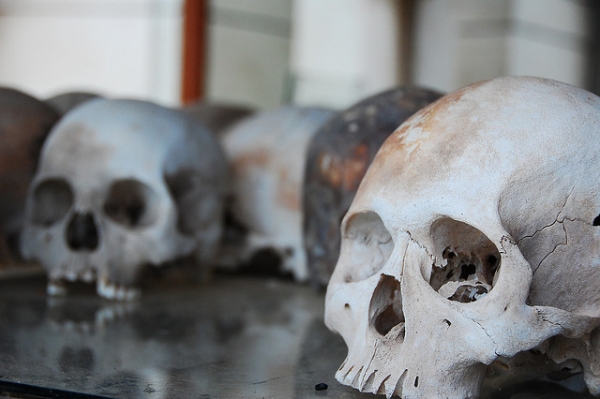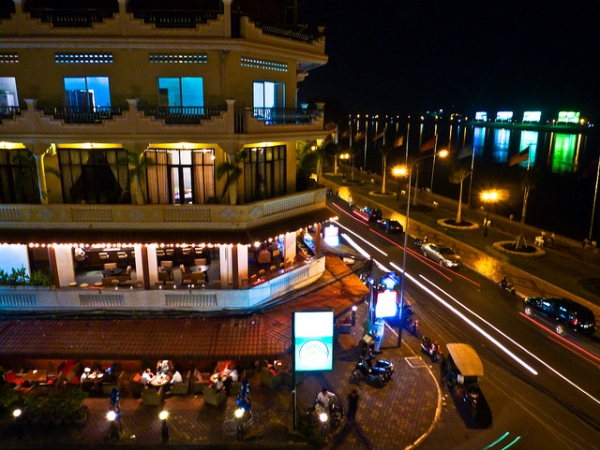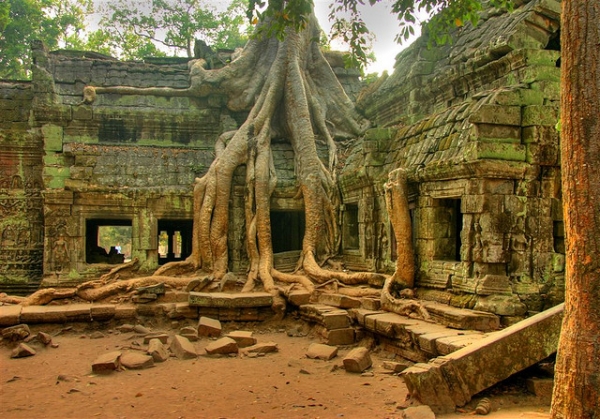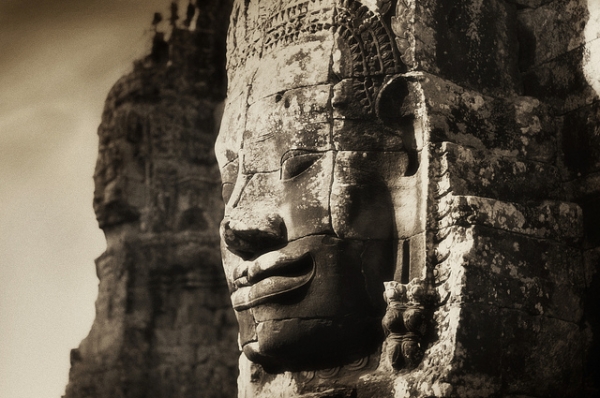Don't miss out on the best jobs!
Subscribe to HelpGoAbroad and weekly we will sent you an email with latest job posts. Provide your email address below
Cambodia sits on the eastern shores of the Gulf of Thailand, squished between southern Vietnam and the south-central border of Thailand. For many people, Cambodia is nothing more than a quick pit-stop between the two countries, summed up by the day-time adventures through the ancient temple complex of Angkor in sweltering heat and the night-time dance clubs of Pub Street in Siam Reap. Although close to two million visitors flood the temples each year, the rest of Cambodia is seen as a relatively unknown and “untouristed” rural landscape rarely explored. Experienced backpackers know this means it is an untouched gem, a land of beaches like the islands of Southern Thailand without the crowds, mountains like Northern Vietnam without the exorbitant fees, and lavish resort-style villas at prices that reflect the lack of people there to occupy them. For anyone taking the time to trek up north to the temple complexes, it is well worth it to explore this beautiful country more deeply, and get to know the history and temperament of the Khmer people, who are rumored to be the happiest in all of South-East Asia.
The Basic Facts
Population: ~15,500,00
Ethnic Groups: 90% Khmer, small percentages of Vietnamese, Chinese, and other
Language: Khmer
Capitol City: Phnom Penh
Area: ~181,000 square miles
Climate: Tropical
Topography: Mostly low plains, some mountains, river delta
Government: Multiparty democracy under a constitutional monarchy
From the CIA World Factbook
The majority of the people of Cambodia are considered Khmers, descendents of the Angkor Empire that stretched across South East Asia between the 10th and 13th centuries. The empire declined eventually, but relics from the time period still stand; the ancient temple complex of Angkor outside of Siam Reap is one of the Seven Wonders of the World and it draws more tourism than any other attraction in South East Asia. In the 19th and 20th century, Cambodia was under French rule, but they gained full independence in 1957.
The most defining aspect of Cambodia’s recent history comes in the form of a bloody genocide under the rule of the communist Khmer leader, Pol Pot. The Khmer Rouge’s regime, from 1975-1979, led to the deaths of over 1.5 million Cambodians, which was nearly a quarter of the population at the time. The Killing Fields, sites where massive massacres occurred, are scattered around the country, the largest and most visited of which lies outside of the capitol city. Bones, skulls, weapons, and mass graves can be seen by visitors. The regime ended when the Vietnamese invaded in 1979, but the pains from this vicious time period are still felt around the country.
The Capital City: Phnom Penh
Phnom Penh is by far the largest city in Cambodia, trumping the next largest city by over 800,000 people. It lies on the confluence of the Mekong and the Tonle Sap, two of the largest rivers in the country. These rivers and the development along them are the most pleasant areas of the city. The rest of Phnom Penh can be a bit rough, but it is a necessary stop for most visitors, and you can make the most of your time here by visiting nearby attractions. The Killing Fields are located outside of the city center, and it is one of those rare “tourist attractions” that almost every visitor should be required to see. It paints a vivid picture of the harsh recent history of the country, one that is still resonating with millions of Cambodians. Tuol Sleng is a genocide museum that is also very informative. Time seems to pass quickly these days, and horrific world events seem to replace one another with unnerving speed. While you are enjoying your travels abroad, visiting beaches and interacting with an environment totally foreign to you, it is humbling and respectful to be informed about the massacre that many current citizens of Cambodia lived through.
On a lighter note, there are other tourist-y places worth checking out that aren’t so emotionally fraught. The Royal Palace is stunning and the National Museum of Cambodia is as relaxing and aesthetic as it is informative, with both history and art exhibits. There are plenty of well-known hostels and cheap hotels in the central downtown area to chose from, including the infamous and rowdy Mad Monkey.
Siam Reap and Angkor
Most people who visit Cambodia bee-line it straight to Siam Reap, the small town that has been built up to host the millions of sight-seers visiting the Angkor temples. As crowded as the temples can be, it is undoubtedly worth your time to check them out. I could write articles upon articles about the complex, built between the 9th-15th centuries as religious centers (“Angkor” translates as “city”), but there are tons of guides out there already. Angkor Wat is the main, picturesque temple in the heart of the complex, but hundreds of other decaying monuments surround it, including the temple of stone faces (Angkor Thom) and the root-laden temple of Ta Prohm, which has been nearly swallowed by the jungle. Hundreds of tours lead people out to the temples on strict time schedules ranging from one to three day excursions, while others choose to adventure on their own whether by bike, rental car, or on foot. In my opinion, if you want to see the most temples, book a tour. Competition keeps pricing reasonable, and it is nearly impossible to see anything at all on foot or even by bike since the temples are so spread out, but if you have the time and the legs to take it all in a little more slowly, bikes can be fun.
Siam Reap itself is, to say it bluntly, a party town, and the central strip where most restaurants and bars are located is packed and busy every night. Get a hostel outside of this area if you want relaxation. There’s a small river running through town that separates this busy area from more hostels clustered in the quieter section.
The town of Siam Reap doesn’t have too much to offer outside of Pub Street, but there is a great flea market and (strangely enough) the Cambodian Cultural Village, which houses miniature replicas of famous Cambodian buildings. Siam Reap has been highly ranked both as a tourist city and an expat city, so chances are you will run into plenty of people who now call this place home.
Phnom Penh and Siam Reap are the two most visited cities in Cambodia, and if you are planning a trip to the country you most likely have both stops on your itinerary already. There are plenty of other places to check out, though, from the Cardamom Mountains to the beaches and islands of Southern Cambodia, and I’ll dive into those in my next article.
Sign in to publish a comment





Be the first to comment on this post.